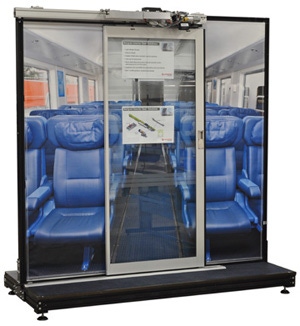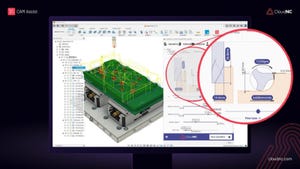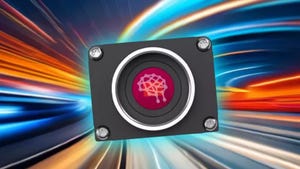Programmable Train Doors
February 14, 2011

Internalpassenger rail doors that meet the U.S. Department of Transportation's Buy America requirements integrate aflexible control system that provides light weight, a compact design andprogrammable operation. Talgo, a leadingmanufacturer and operator of innovative high speed passenger trains, will usethe doors in its new Intercity Series 8 train platform in the UnitedStates.
Programmable Train Doors_A |
More than 14,000 unique internaldoor systems designed and developed by Norgren have been installed in rail carsworldwide since the solution was introduced in 1987. The system's light weightdesign includes an integral controller that provides passenger detection andanti-entrapment features. Its compact design fits into many applications withlimited space and is available in both electric and pneumatic versions. Longservice life and ease of maintenance help reduce the total cost of ownership.
"We have been supplying a number ofhigh speed rail customers this type of actuator for a number of years inGermany," says Mark Densley, business development manager for Norgren Americas."We started out with a pneumatic version but the demand in the rail industryhas moved to electric doors."
The Norgren electric system uses alightweight aluminum extrusion which is based on the company's pneumatic LINTRArodless-style cylinder. One advantage of the electric doors is that using programmableoperation, no regulators and valves need to be changed in the field. Once theyare set, electric doors are ready to go.
"We use the electric motor in conjunctionwith a toothed belt which runs around the extrusion," says Densley. "In theextrusion, there is a carriage attached to roller bearings with rubber wheelson them. As the motor turns and the belt moves, it pulls the carriage which isholding the door panel to the actuator."
One unique benefit of the product isan integrated binary encoder that the controller is constantly monitoring asthe door is travelling. If there is a jam or someone standing in the doorway,the controller will detect that to provide important obstacle detection and anti-entrapmentfeatures that are very important in the rail industry.
All of the operation of the doorcontrols is programmable including the amount of time the door goes back intothe pocket and waits, and the amount of force acting on any obstacles. Incalculating the force, the system can use the current sent to the motor tocalculate the required force to be exerted on the door leaf.
The door control mechanism is fullyintegrated with a standard footprint controller attached to the actuator.Typically, the controller is matched with an I/O card which provides theinterface to the train's diagnostic system. If there is a jam or problem withthe belt, a signal communicates the problem back to the train managementsystem. The I/O card also
Programmable Train Doors_B |
allows the system to use IR sensors on either side ofthe doorway for detecting traffic and, if a person walks up to the door,automatically opens as well.
"A key to the system is its compactdesign," says Densley. "Many customers have space limitations in the area abovethe doorway and obstacles such as HVAC piping and electrical wiring that get inthe way. To deal with those problems in the past in Europe is cut out areas inthe actuator to make it fit.
Because Norgren is supplying the dooractuator and controls as a custom system, it makes it easy to add specificcustomer requirements and components such as locking mechanisms, detectionsystems such as sensitive edges and latches to keep the door open, for example,if there is a power failure.
Norgren transferred the technologyto the U.S. in 2010 to work on this project for Talgo. The U.S. market is slightly different becauseof the forces involved to open the door and A.D.A. standards are slightly lowerthan what is required in Europe. But by re-parameterizing the controller, thoseadjustments can be achieved very easily.
About the Author(s)
You May Also Like







